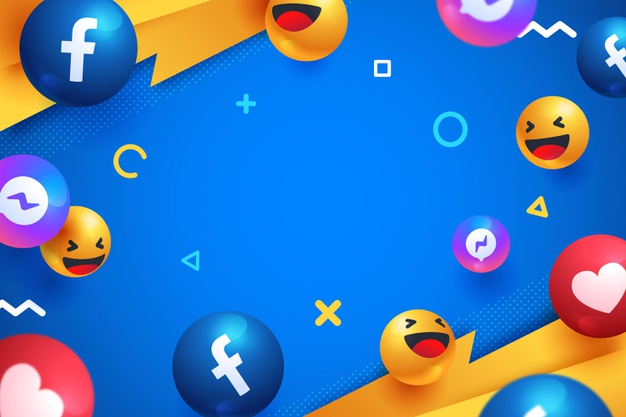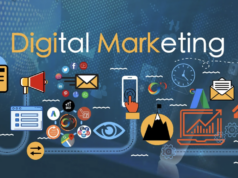
Successful marketing doesn’t happen by accident. Every advertisement that you see has been carefully designed to elicit the desired response in consumers, based on psychological principles that make us more willing to engage with a brand.
A reputable advertising agency specializing in your industry, such as Good Apple for pharmaceutical companies, can use these principles to achieve maximum impact in your ads. If you’re creating your own promotional material, you could give your efforts a boost by considering the following ways in which psychology plays a key role in successful marketing:
1. Psychology can help to evoke an emotional response

Some of the most memorable ads are those which evoke a strong emotional response; businesses can take advantage of this by creating advertisements that use humor or fantasy to pitch their products.
The 2016 Nielson Report found that companies could experience a 23% increase in product sales if their ads were able to generate an emotional response from consumers. There are a few common approaches to eliciting an emotional response in marketing:
- A fear-based approach plays on a consumer’s desire to protect themselves and their family and may be used to advertise insurance or chemical-free natural products.
- An excitement-based approach is typically used when a new product is being unveiled, or to suggest to a consumer that their life would be more thrilling if they purchased the product. New tech gadgets and car models often use this approach.
- A humor-based approach is a great option to drive memorability and to encourage people to think positively about your brand. It’s not uncommon for a well-produced, humorous ad to go viral, bringing even more exposure to the associated business.
2. Psychology can use color to influence behavior

Our behavior can be influenced by things that we may not even notice in day-to-day life, such as color. Chances are that you haven’t given much thought to the color of the brands and sites with which you interact, but they could be driving your behavior without your knowledge. Something as simple as changing the color of your websites’ call-to-action buttons can increase conversion rates by 14.5%, and adding a colored border to an advertisement has been shown to double the click-through rate.
‘Color psychology’ is the idea that the colors around us can impact our mood and behavior. Light blue shades are frequently used in hospitals and schools due to their theoretical calming effect on people, while red shades are associated with mental stimulation, strength, and power. One of the more common places you may see color psychology at work is in the food industry. Green is frequently used on foods advertised as healthy options, due to its association with nature; red and yellow are used for fast food marketing so frequently that the combination has become known as ‘the ketchup and mustard theory’. These color combinations can impact how consumers feel about your business at first glance; understanding the right ones to use for your product can assist in creating meaningful branding.
3. Psychology can use sound to create positive experiences

The sounds that you hear during your browsing or shopping experiences may be influencing you more than you know. The music played in stores is not chosen by coincidence, but carefully curated to make you feel comfortable and browse for longer; jingles written specifically for a company are intended to get stuck in your head to increase brand recognition, and the melodies in advertisements are designed to create certain feelings.
One Australian study found that 87% of participants reported feelings of happiness and excitement when exposed to short, sharp notes, while a major to minor key shift elicited feelings of sadness in 83% of participants. Based on this study, a brand wanting to evoke feelings of sophistication and calm should opt for acoustic guitar sounds, which 90% of participants found soothing. In another study conducted by Neurosight, more than 150 ads were analyzed to identify which elements were most strongly related to long-term memory encoding and brand recall. The study found that music in advertisements designed for TV is more memorable to consumers when the tempo or lyrics match the actions taking place on the screen; this principle drives some of the ‘storytelling’ in modern ads.
4. Psychology can help win sales using repetition

The number of times a consumer is exposed to an ad can impact their level of brand recall and perception of the product. A recent study reported that the average person reaches peak interest in a company after seeing product marketing approximately ten times, with their brand recall also increasing with each exposure. Interestingly, this same study found that the effects of repetition diminish over time, meaning that companies have a limited number of repetition opportunities in which a consumer is more likely to purchase a product.
One of the most successful ways in which businesses harness repetition in marketing is through retargeting. Retargeting is the practice of showing ads to potential customers who have shown some interest in a brand by visiting a site or clicking on a previous ad. Retargeted ads usually appear on platforms such as Facebook or Google, and can provide conversion rates averaging as high as 128%, according to a study by DataXu. An added benefit of retargeting is that as the potential customer has previously shown interest in the brand, only 11% of people have a negative reaction to these ad placements, and 30% view them positively.
5. Using trusted platforms

The increased integration of promotional material into social media platforms has been a blessing for businesses; a study for the Journal of Advertising Research found that consumer trust in Facebook reduces the perceived intrusiveness of ads. With Instagram and Facebook encouraging advertisers to create content similar to the platforms’ organic content, consumers are more likely to accept the presence of their ad placements.
A major benefit of advertising on a platform trusted by consumers is the ability to target your ads to your preferred demographic. By analyzing your target consumers, you can narrow down the age, gender, location, and even interests of your ideal clients, to ensure that your marketing budget is spent only on users who are somewhat likely to be interested in your product.
Conclusion
If you’re a business owner, understanding the ways in which other brands have used psychology to create marketing success can be instrumental in increasing your own sales. By taking note of which colors, sounds, and platforms might be right for your business’s needs, you can increase the impact that your ads are having on your target consumer.
Consider using some of these tips and tricks to ensure that your next marketing campaign is a triumphant one.












